Search Engine Optimization is all about data and its analysis. When I say data I mean tons of data. If the only metric you use to evaluate a website is Domain Authority, you better find something else to do.
Data collection is not rocket science but it takes plenty of time. You have to use several tools and services as data sources, collect everything in your Excel file or Google Sheets. And what if you need to analyze thousands of pages? That will take hours and days if you don't have the tools that can help automate this task.
Fortunately, there's one and it's called Netpeak Checker. It's a multifunctional tool that aggregates data from world-famous SEO services, checks on-page parameters, and scrapes search engine results. It can check URLs by 384 parameters in total!
Read till the end where I will show how to find guest posting opportunities in Netpeak Checker.
Netpeak Checker Review 2019: Discount Coupon (Save Upto 40%Now)
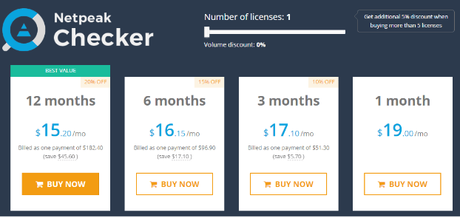
With this promocode, you can get an extra 10% off. YOURPROMO
Who Needs Netpeak Checker?
Netpeak Checker will be useful for SEOs, webmasters, bloggers, link builders, digital marketers, content marketers, and analysts.
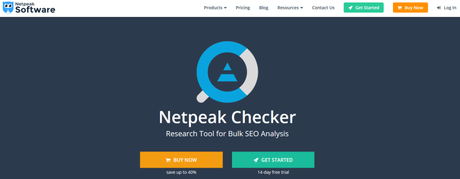
Here are the main tasks you can solve with Netpeak Checker:
- URL analysis and comparison by 380+ parameters
- Link donors evaluation
- Competitor research
- Contact info scraping
- Social media activity analysis
- Content analysis
- Searching for dropped domains
- SERP scraping
- SERP analysis
The length of this list depends on your creativity. Netpeak Checker is far from being a single-task tool. Let's see how it works.
Detailed Netpeak Checker Review
Once you have successfully launched Netpeak Checker, you will see the main window.
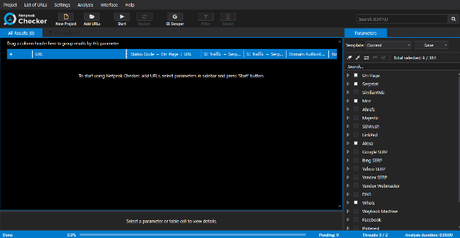
As you can see it has a dark color scheme, but you can change it to the light one in the program settings.
First of all, you need to add the URLs you want to analyze. There are several ways you can do it. Click on the 'List of URLs' tab on the main menu at the very top. You can:
- Enter URLs manually
- Upload them from a file
- Download from a Sitemap
- Paste from clipboard
This menu also allows clearing and deleting URLs.
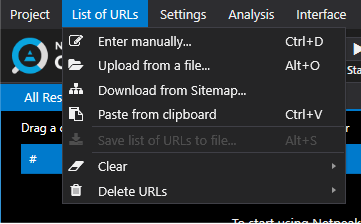
Once URLs are added, it's time to select the parameters you want to check.
Parameters in Netpeak Checker
Netpeak Checker analyzes 323 parameters from 21 services and checks 61 on-page parameters. All parameters can be found on the 'Parameters' tab in a sidebar.
Note, that some of the services like Ahrefs require a paid subscription to get their parameters.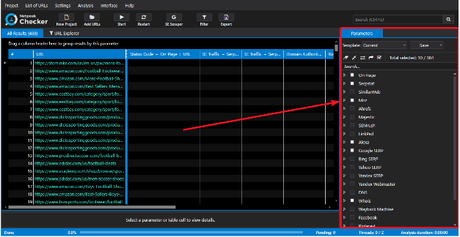
I won't describe each parameter as this review would last forever, but let's have a quick look at each group.
On-page. Netpeak Checker analyzes 61 on-page SEO parameters. They include status code, server response time, title, description, outgoing links, redirects, H1-H6 headings, hreflang, etc. You can also get a list of social links, phone numbers, and emails from the page.
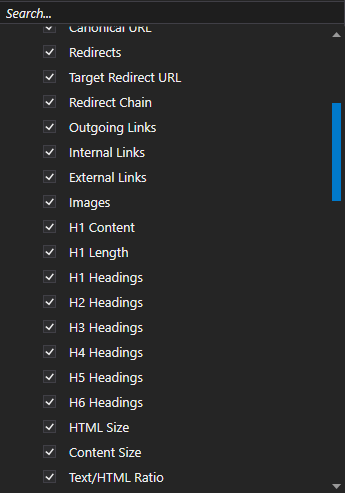
Serpstat. Here you can get data on traffic, visibility, ads, keywords in PPC, and a number of keywords having certain rankings in top-100. You need Serpstat paid API key to get these parameters.
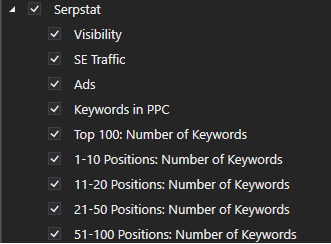
SimilarWeb. SimilarWeb provides with in-depth traffic insights. You can get global and category ranks, user behavior metrics, and monthly traffic by different sources. You need SimilarWeb paid API key to get these parameters.
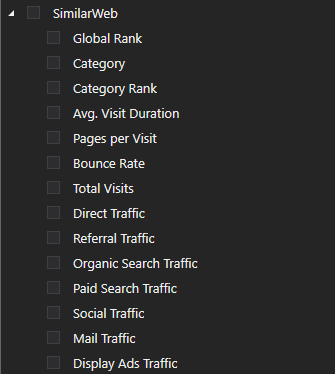
Moz. Data from this well-known SEO service is divided into three groups: root domain parameters, subdomain parameters, and URL parameters. It includes the world-famous Domain and Page Authority, Moz Rank, Moz Trust, number of equity-passing links, and so on. Moz offers a free API key with some limits.

Ahrefs. Having one of the biggest backlink databases in the world, Ahrefs allows analyzing competitors backlink strategy in a couple of minutes. Data from Ahrefs in Netpeak Checker is divided into subdomain, host, prefix, and URL parameters. You can get Domain Rating, a number of referring domains, dofollow/nofollow backlinks, referring subnets, backlink types, etc. You need Ahrefs paid API key to get these parameters.

Majestic. Majestic owns one of the biggest and the most updated backlink databases. Majestic data in Netpeak Checker is divided into the root domain, host domain, and URL parameters. You can get a number of backlinks of different types, referring domains, Trust Flow, Citation Flow, and others. You need Majestic paid API key to get these parameters.
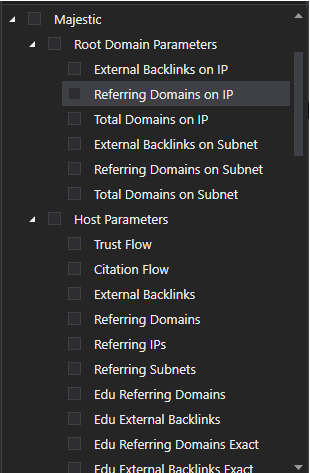
SEMrush. SEMrush is another leading SEO service offering a huge range of data. Parameters are divided into 3 categories: root domain, host, and URL. You can get data on traffic, backlinks, SEMrush Rank, Trust Score, etc. You need SEMrush paid API key to get these parameters.

Alexa. You can get 4 Alexa parameters: global rank, local rank, country, and a number of sites linking in. Alexa parameters are free.
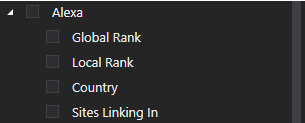
Google, Bing, Yahoo, Yandex SERP Parameters. Netpeak Checker allows retrieving key SEO parameters from four leading search engines. You can learn whether a URL is indexed and cached, its cache date and time. Bing, Yahoo, and Yandex allow checking if the target page is merged with another page. All the search engines parameters are free.
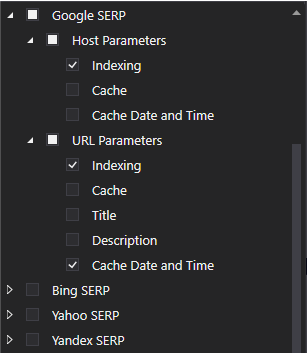
DNS, Whois, WaybackMachine. I've combined these three services because they are usually used together. Domain Name System allows getting data on host IP and location. Whois shows domain creation and expiration date, availability, and email addresses.
WaybackMachine is a web archive which collects and stores website snapshots over time. Checker shows when a URL was crawled by WM and how many website pages are in its index. All the data from these services is free.

Facebook and Pinterest. You can get metrics from two major social media websites. Facebook allows checking its main engagement metrics such as reactions, comments, shares, and also OpenGraph tags from the page. You can also check how many times the page was pinned via Pinterest.

Google PageSpeed Insights, Google Mobile-Friendly Test, Google Safe Browsing. These Google services allow checking URLs by 3 essential characteristics: speed, mobile-friendliness, and safety.
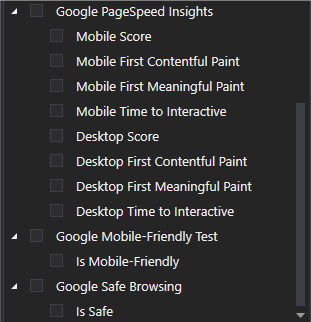
As you can see, there are hundreds of SEO parameters you can retrieve in Netpeak Checker. To save your time, there's an option to create parameters templates. For example, you can create templates for different tasks such as link building, content analysis, etc. There are also five preset templates you can use.
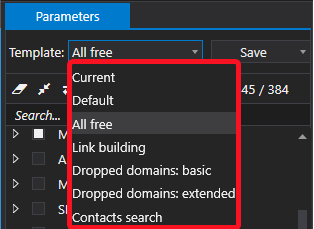
Select all you need, and let's move on to the next step which is settings.
Netpeak Checker Settings | Detailed Netpack Checker Review
Netpeak Checker is pretty easy to setup. The first two setting tabs allow tweaking interface, crawling speed, changing user agent, and using basic authentification.
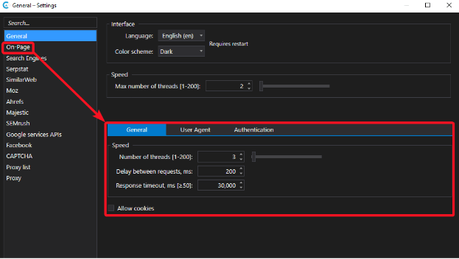
On the 'Search Engines' tab, you can configure four search engines to get data based on local results, specific language, and period. This allows making retrieved data even more precise and relevant to your needs.
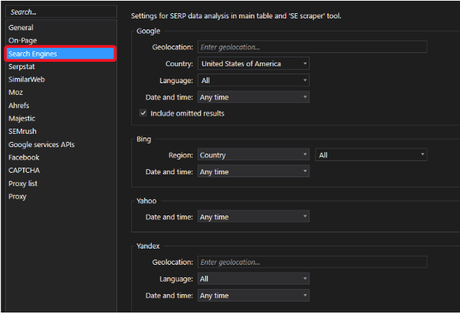
The next eight tabs are dedicated to specific services integrated into Netpeak Checker. You can add your access tokens to the ones you want to use and configure some additional settings such as the search database of SEMrush or Serpstat.
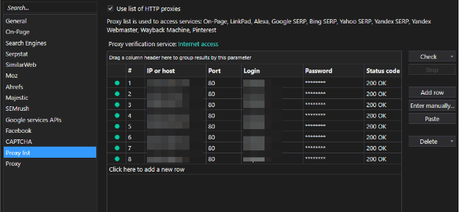
The next two tabs will let you scrape Google parameters much easier and faster. The first is dedicated to CAPTCHA auto-solving services. There are 4 integrations with such services in Netpeak Checker: 2Captcha, Anti-Captcha, RuCaptcha, and CapMonster.
The second one allows adding a list of proxies, checking their internet access, and status in different search engines (for instance, some may be blocked in Google).
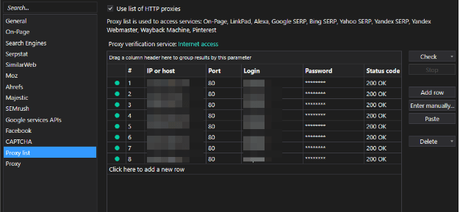
That's pretty much it. All you need is to set up the tool once and all the settings will be saved automatically.
Interactive table
The amount of data you can get in Netpeak Checker is huge. But the results table makes it easy to handle it efficiently. You can group the results by any parameter and use several filtering rules.
The context menu allows to quickly recheck any cells in the table and opening URLs in external services.

SE Scraping Tool
Netpeak Checker offers an amazing feature called SERP scraping. You can enter a list of search queries and get search as many results upon them as possible. Let's have a detailed look at this tool.
First of all, click on the 'SE Scraper' button on the main toolbar. It will open a new window of the SE scraper tool.
Enter a list of search queries to the corresponding textbox. You can add a prefix to all of them if you need.
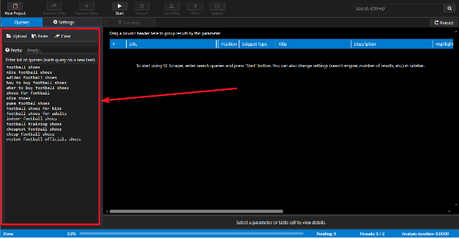
Now let's move on to the settings. You can choose among four search engines to scrape: Google, Bing, Yahoo, and Yandex.
Select the number of search results you want to get: 1, 3, 10, 50, maximum, or any custom value. Choose snippet types you want to scrape: video, image, news, site links.
Configure search engines settings to get local-oriented results. Add a proxy list if you want to scrape Google or Yandex to minimize CAPTCHA. You can also use CAPTCHA auto-solving services.
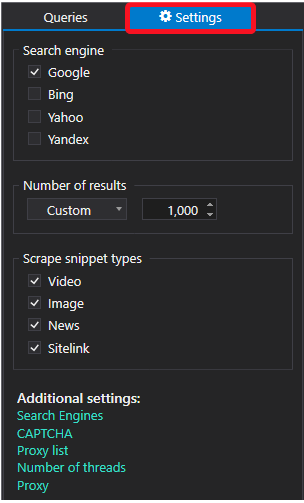
When scraping is done, you will get all the results grouped by the corresponding queries. Each result shows a URL, position, snippet type, title, description, highlighted text, site links, and rating.
You can export the results in .xlsx or .csv formats or transfer the URLs or their hosts into the main tool for further analysis.

How to find guest posting opportunities with Netpeak Checker
Using Netpeak Checker you can easily collect a list of websites accepting guest posts and analyze their quality. That's how you can do it:


Moz/Ahrefs/SEMrush/Serpstat/Majestic/Alexa:
Serpstat/SEMrush/SimilarWeb:
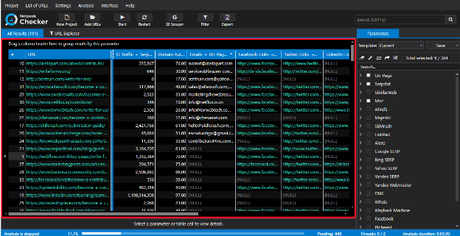
Netpeak Checker Pricing
- Go to the SE scraper tool.
- Enter a list of guest blogging footprints like:
Netpeak Checker has a free 14-day trial you can use with no limits at all. After the free trial, you can buy a license for 1, 3, 6, and 12 months.
"write for us"Pricing is quite flexible and depends on the number of licenses you buy and their period. Original price is $19/mo, but when you buy a 12-month subscription, it costs $182/year ($15/mo), which is pretty cheap for such a tool.
"Become a contributor" "submit a guest post"With this promocode, you can get an extra 10% off. YOURPROMO
"guest post by"Quick Links:
"guest article" etc.Conclusion: Netpeak Checker Review 2019 | Should You Go For It??
- In the prefix field, write your target keyword to specify the niche you want to find blogs in. For example, web design.
- Set the number of results to the maximum or as many as you want and start scraping.
- When scraping is finished, filter out pages that suggest 'top-n blogs for guest posting in 2019'. Use the following filtering rules:
Netpeak Checker is a robust tool that definitely should be in everyone's toolbox. It makes data research easy and saves an enormous amount of time.
Exclude → Title → Contains → list Exclude → Title → Matching RegExp → \d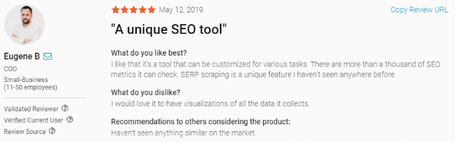
If you need to collect various SEO parameters in one place, conduct competitor research, scrape search engines, Netpeak Checker is a perfect match for you.

- When filtering is done, click transfer URLs to transfer all unique URLs to the main tool for further analysis.
- Select the following parameters to evaluate the websites and get their contact data:
- Domain Authority/Domain Rating/Rank/Trust Flow/Citation Flow
- Number of referring domains
- Other metrics of your choice
- Here you go. A list of relevant blogs accepting guest posts, their contact info, and key metrics, are in your table.


